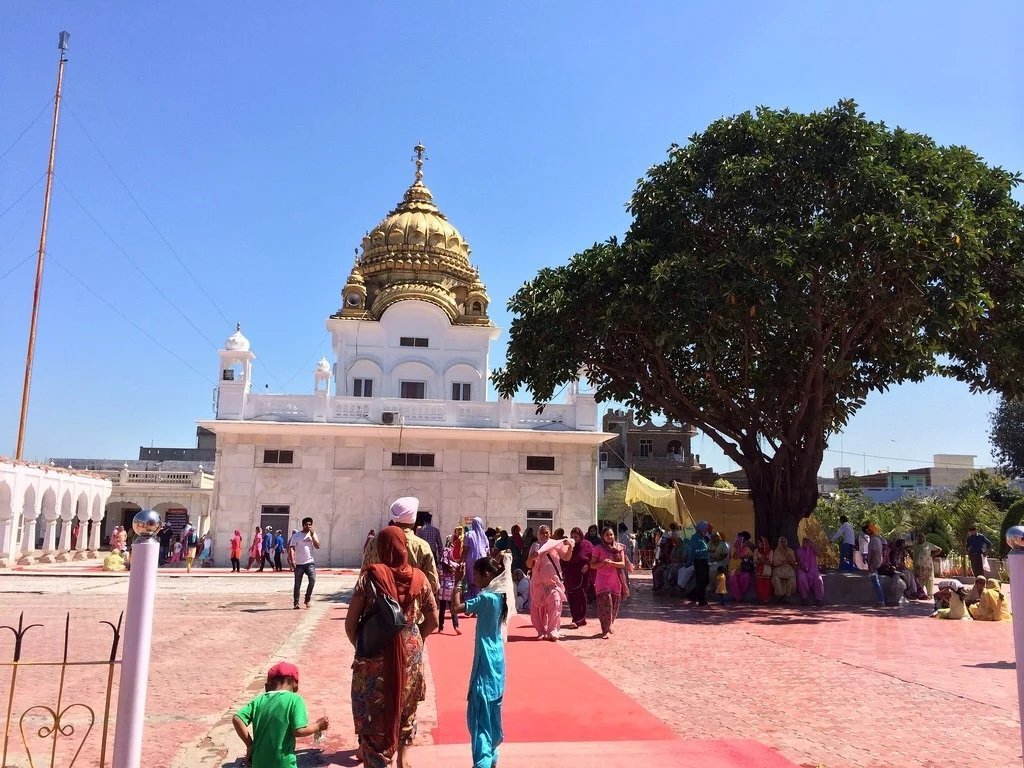Explore Dera Baba Nanak—a sacred site by the Ravi River in Punjab, tied to Guru Nanak's legacy and home to historical gurdwaras and spiritual heritage.
Explore the life of Sant Atar Singh Atlevale, a revered Sikh preacher. Discover his journey from Rawalpindi to Atla Kalan, enriching Sikh practices.
NISHCHAL SINGH, PANDIT SANT (1882-1978), widely respected holy man, preacher of Sikhism and head of the Sevapanthi sect of the Sikhs (1950-78), was born on 18 April 1882, the son of Bhai Amir Singh and Mat Piar Kaur, a pious couple of Mittha Tiwana in Shahpur (Sargodha) district of Pakistan Punjab. Nishchal Singh lost his father at the age of five and was brought up under the care of his eldest brother, Mahitab Singh. Mahitab Singh, himself a devoted Sevapanthi saint, led Nishchal Singh to take to the same path. He sent him to Varanasi for higher learning.
Explore BANI BIRDH PRATAP, a revered collection of religious poetry by Baba Ram Das, immersed in devotion and spiritual enlightenment.
Discover Bibi Pardhan, daughter of Baba Ala Singh, who dedicated her life to spirituality and education, inspiring many with her legacy in Punjab.
Discover the legacy of Pandit Basant Singh, Nirmala scholar and tutor to royalty, renowned for his contributions to religious education and literature.
Uncover the life of Tota Puri, the monk who initiated Sri Ramakrishna into sannyasa and taught Advait Vedanta. Explore his journey and influence.
BIR SINGH, BABA (1768-1844), soldier become religious preacher and saint, was born in July 1768 at the village of Gaggobua, in Amritsar district of the Punjab, the son of Seva Singh and Dharam Kaur. After the death of his father in one of the campaigns against the Afghan rulers of Multan, Bir Singh joined the Sikh army. He participated in Maharaja Ranjit Singh *s campaigns for the capture of Kashmir and Peshawar. After several years of active service, he secured his dismissal from the army as he came under the influence of Baba Bhag Singh, a Sikh saint belonging to Kuri, in Rawalpindi district.
CHARYARI SOWARS was the name given to an irregular cavalry regiment in Sikh times. It owed its origin to four friends, or Char (four) Your (friends), who were seen together all the time. Their names were: Bhup Singh Siddhu.Jit Singh, Ram Singh Saddozai and Hardas Singh Bania. They were all young men of the same age, very handsome, well built and always elegantly dressed. Maharaja Ranjit Singh became very fond of the foursome and employed them as soldiers. He was so impressed by their bearing that he gave them fine horses to ride and created a regiment named Charyari Sowars after them.
DARGAHA SINGH, BHAI (1713-1823), a Nirmala saint, was born in 1713 the son of Bhai Nigahia Singh of the village of Laungoval, in present day Sangrur district of the Punjab. Nigahia Singh was known to be the elder brother of Bhai Mani Singh, the martyr. For the divali festival of 1725, Nigahia Singh along with his seven sons went to Amritsar where the whole family received the initiatory rites of the Khalsa at the hands of Bhai Mani Singh. Three of the brothers remained in Amritsar, among them Dargaha Singh who showed marked aptitude for scholarly learning as well as for the martial arts. He gained proficiency in both fields, though he was more inclined towards religious pursuits.



